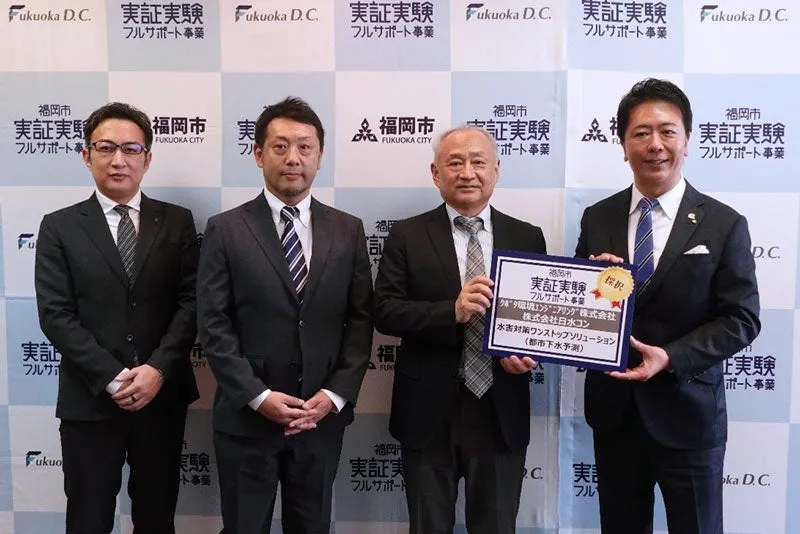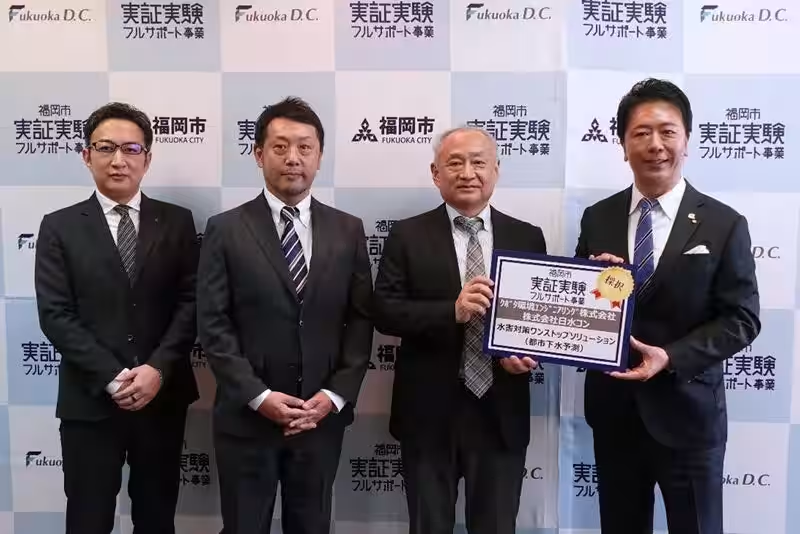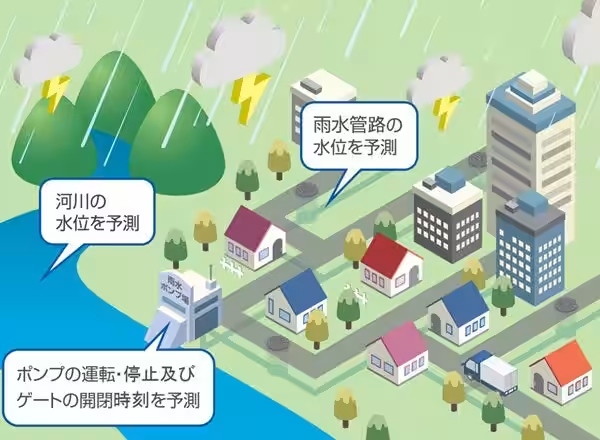

One-Stop Solution for Urban Flood Countermeasures: Fukuoka's Innovative Experiment
Introduction
Fukuoka City has recently selected an innovative project entitled "One-Stop Solution for Urban Flood Countermeasures (Urban Sewage Forecast)". This project utilizes advanced technologies such as AI and physical models to combat urban flooding, particularly during heavy rainfall. The project is a collaboration between NISUI Co., Ltd., which is headquartered in Shinjuku, Tokyo, and Kubota Environmental Engineering Co., a 100% subsidiary of Kubota Corporation based in Osaka. The aim is to support local governments in creating effective facility management systems to address flood risks.
Background and Challenges
In urban areas, rainwater drainage systems are established to channel rainwater into rivers. However, during heavy rains, these systems can become overwhelmed, leading to "pluvial flooding" when water overflows from manholes and gutters. Such flooding can severely disrupt the daily lives of residents. To counter this, rainwater pumping stations need to operate efficiently to evacuate excess rainwater to river systems. Unfortunately, operators often face the mental strain of waiting for uncertain triggers to activate the pumps, especially during adverse weather conditions.
Overview of the One-Stop Solution
The One-Stop Solution leverages AI to produce real-time flooding predictions and links this with the operation of rainwater pumping stations. This dual functionality combines NISUI's "Blitz FLOOD," a system for predicting pipe levels based on historical data, with Kubota's rainwater pumping operation simulator that forecasts pump actions based on river water levels. With this integrated approach, the solution aims to relieve operators’ burdens during heavy rains by providing timely and efficient operational guidance.
Also, by utilizing AI to analyze past water level data and integrating it with geographical and rainfall data to create simulations, the solution precisely predicts risks of flooding.
Summary of the Experiment
From July 1, NISUI and Kubota Environmental Engineering will test the effectiveness and accuracy of their solution during actual heavy rainfall conditions within the city. The objectives include improving the precision of real-time flooding predictions for drainage systems and operational forecasts for pumping stations. This phase will also focus on establishing better management systems for these facilities.
The primary components of the experiment include:
- - Water Level Prediction: Analyzing high-risk flood areas in the drainage system to develop personnel deployment plans.
- - Operational Predictions: Evaluating the performance of pumps and gates at rainwater pumping stations to support operators in their tasks.
Future Outlook
Through this experiment, both NISUI and Kubota Environmental Engineering are committed to enhancing the accuracy of their predictive systems. By providing local governments with real-time, readily accessible solutions, they aim to strengthen responses during heavy rainfall events and alleviate burdens on facility managers. Ultimately, their work is directed towards creating a society where the risk of flooding is minimized for residents, contributing to a sustainable future society rich in resilience and capability to adapt against climate challenges.


Topics Environment)










【About Using Articles】
You can freely use the title and article content by linking to the page where the article is posted.
※ Images cannot be used.
【About Links】
Links are free to use.